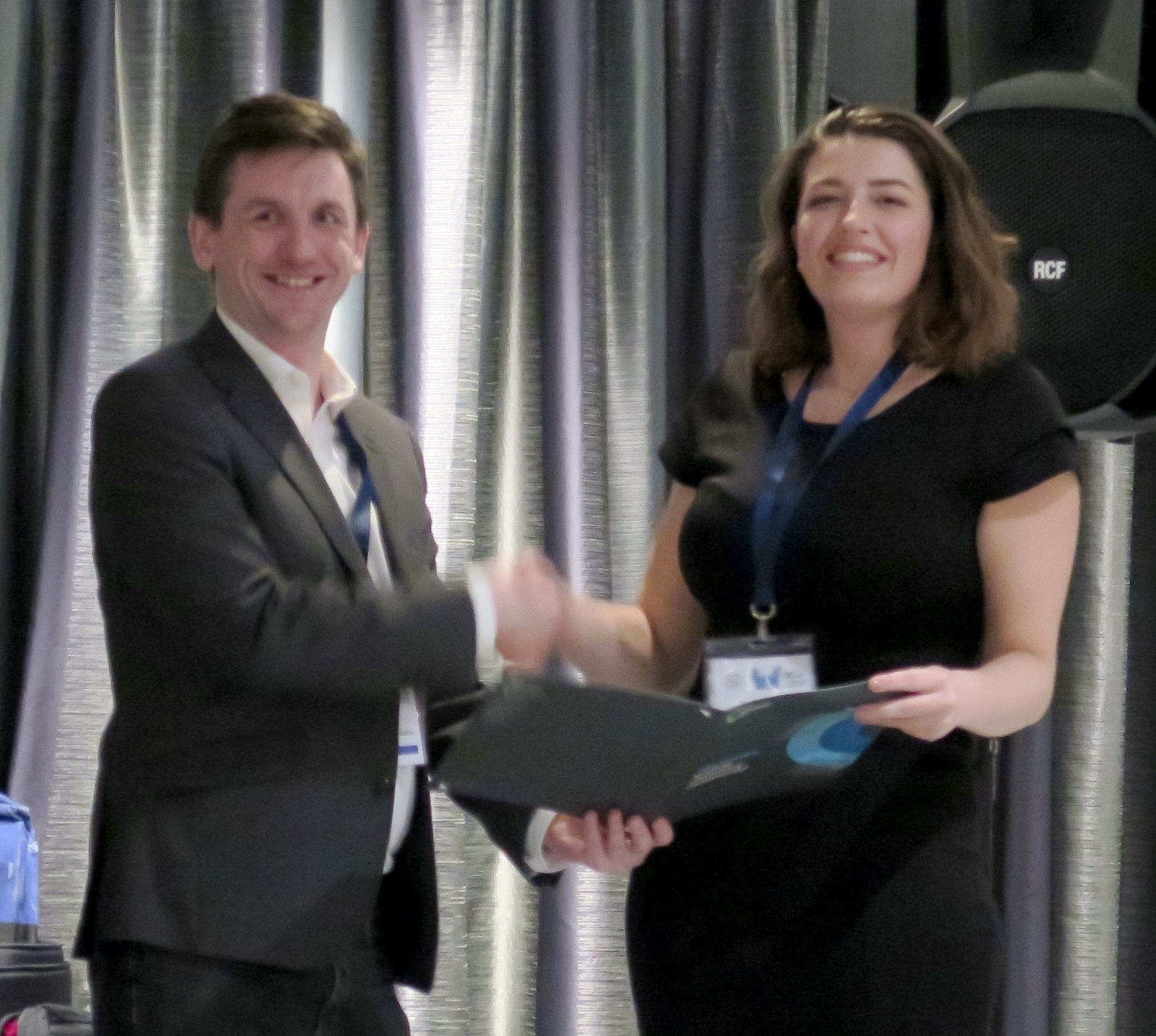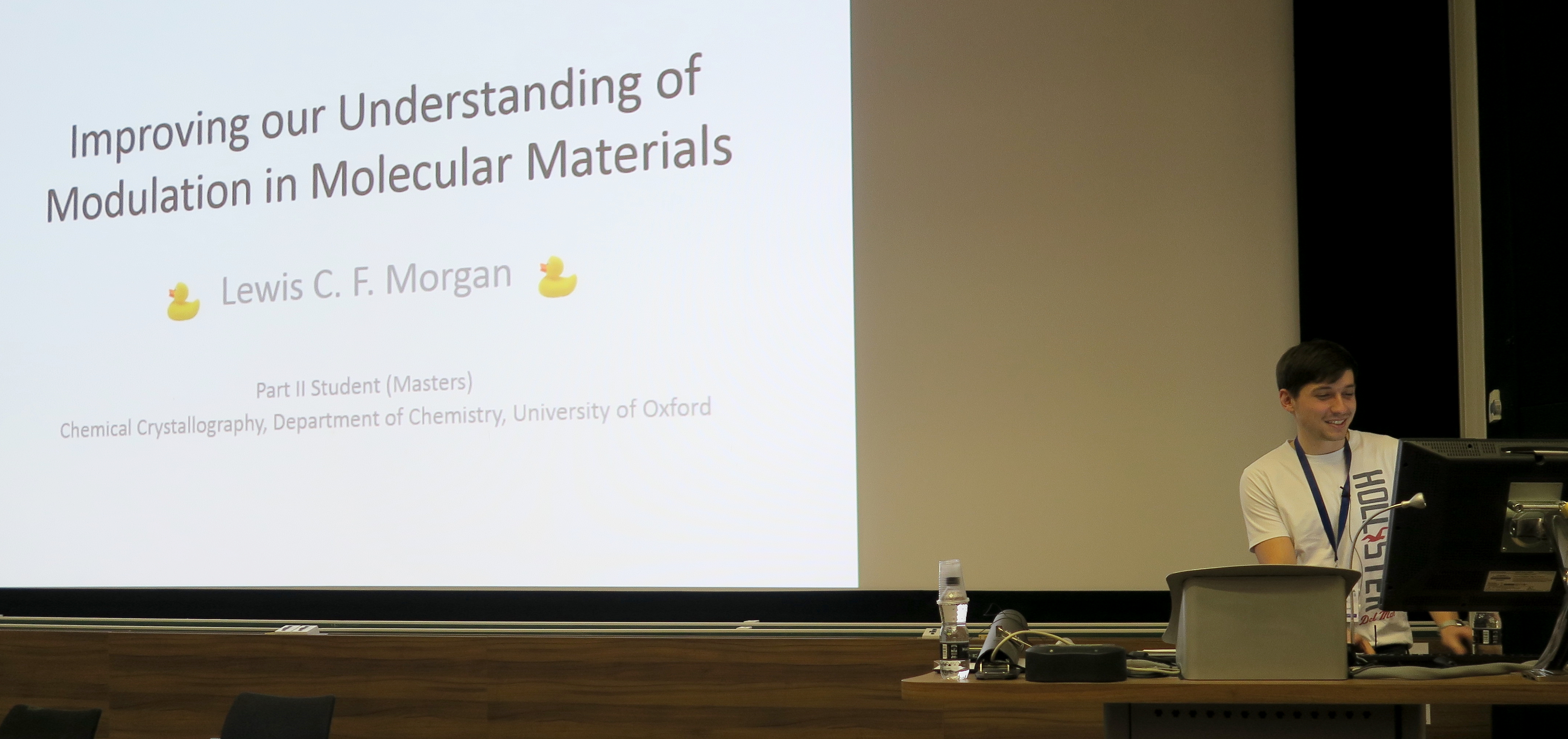 The 2018 Meeting of the British Crystallographic Association was held at Warwick University where Chem. Cryst. was well represented. The meeting started with the Young Crystallographers Satellite meeting, during which Lewis Morgan’s oral presentation was so “eggsellent” that he won the Industrial Group Prize for the best talk, and with it, the dubious honour of presenting it again as a plenary in the main meeting.
The 2018 Meeting of the British Crystallographic Association was held at Warwick University where Chem. Cryst. was well represented. The meeting started with the Young Crystallographers Satellite meeting, during which Lewis Morgan’s oral presentation was so “eggsellent” that he won the Industrial Group Prize for the best talk, and with it, the dubious honour of presenting it again as a plenary in the main meeting.
At the conference dinner Kiaora Tolmie received a CCG CrystEngComm poster prize for her poster on hard-to-crystallize materials, and James Bird was awarded the YCG I’m-a-scientist-get-me-out-of here prize for the poster presenter who most clearly and enthusiastically communicated their results.
Congratulations to all three winners!
A full list of the presentations from Chem. Cryst.:
George A. Sackman & Richard I. Cooper
Distinguishing Disorder: A Molecular Dynamics Approach (Poster Presentation)
Kiaora L. M. Tolmie & Richard I. Cooper
Structure Determination of Hard-to-Crystallize Materials (Poster Presentation)
Lewis C. F. Morgan, Jack N. Blandy, Claire A. Murray, Kirsten E. Christensen & Amber L. Thompson
Improving Our Understanding of Modulation in Molecular Materials (Poster & Oral Presentation)
James M. Bird & Richard I. Cooper
A Comparison of Molecular Dynamics Techniques for Simulation of Thermal Disorder in Molecular Crystals (Poster Presentation)
Oliver J. A. Bar & Richard I. Cooper
A Study of Phase Transitions in Organic and Metal-organic Inclusion Complexes through Molecular Dynamics Simulation (Poster Presentation)
Richard I. Cooper
CrysPy: CRYSTALS in Python (Poster Presentation)
Amber L. Thompson
When are Bad Data Good Data? (Keynote Oral Presentation)
